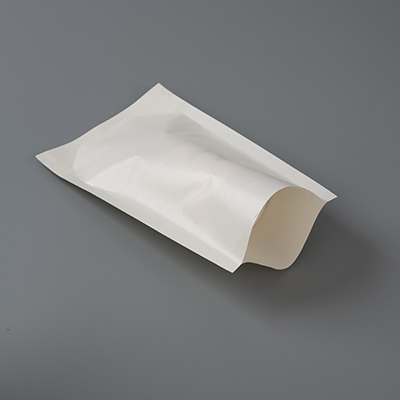Heat seal paper represents a specialized category of packaging materials engineered to create hermetic seals through the application of heat and pressure. This technical paper provides an in-depth examination of its material properties, functional characteristics, industrial applications, and proper maintenance protocols.

Heat seal paper features a precisely calibrated heat-sealable coating that activates within specific temperature parameters. The thermal activation range typically spans from 80°C to 150°C (176°F to 302°F), with optimal sealing occurring between 100°C to 130°C (212°F to 266°F). The coating formulation consists of polymer blends including polyethylene, polypropylene, or specialized copolymer systems, with coating weights ranging from 15 to 40 g/m² depending on application requirements. The seal strength achieved can vary from 200 to 800 g/25mm peel strength, measured according to ASTM F88 standard test methods.
The material demonstrates exceptional barrier properties against environmental factors. Water vapor transmission rates (WVTR) typically measure below 5 g/m²/24hrs under standard testing conditions (38°C, 90% RH), while oxygen transmission rates (OTR) maintain levels under 50 cm³/m²/24hrs at 23°C and 0% RH. The base paper substrate generally ranges from 60 to 120 g/m² in basis weight, providing mechanical stability while maintaining flexibility. The seal integrity remains effective across a pH range of 4.0 to 9.0, ensuring compatibility with various product types.
Heat seal paper exhibits remarkable tensile strength characteristics, with machine direction tensile strength ranging from 4 to 8 kN/m and cross direction strength between 2 to 4 kN/m. The elongation at break typically measures 3% to 8% in machine direction and 5% to 12% in cross direction. The surface roughness, measured as Parker Print-Surf roughness, generally falls below 2.5 microns, ensuring excellent printability and coating uniformity. The material maintains dimensional stability with minimal shrinkage, typically less than 0.5% when exposed to temperature variations from 20°C to 100°C.
Modern heat seal papers comply with international regulatory requirements including FDA 21 CFR Part 176.170 for direct food contact, EU Regulation 10/2011 for food contact materials, and ISO 9001 quality management systems. The materials are manufactured with migration limits below 10 mg/dm² for overall migration and 0.01 mg/kg for specific migration of heavy metals. The paper substrates often contain 10% to 30% post-consumer recycled content while maintaining performance specifications, supporting sustainable packaging initiatives.
Food Packaging Systems: Primary application in vertical form-fill-seal (VFFS) machines for packaging snacks, confectionery, and frozen foods. Used for creating airtight seals in pouches, sachets, and wrappers with seal widths typically between 3-10 mm.
Medical Device Packaging: Critical application in sterile barrier systems for surgical instruments, implants, and diagnostic kits. The paper provides breathable yet bacterial-proof seals meeting ISO 11607 standards for medical device packaging.
Pharmaceutical Packaging: Used for unit-dose packaging of tablets, capsules, and medical powders. Provides child-resistant and senior-friendly packaging solutions with tear resistance exceeding 400 mN according to ASTM D689 standard.
Electronics Protection: Employed in packaging moisture-sensitive electronic components, providing electrostatic discharge (ESD) protection with surface resistance ranging from 10^6 to 10^9 ohms/sq.
Industrial Product Packaging: Used for automotive parts, mechanical components, and hardware items requiring dust and moisture protection during storage and shipping.
Consumer Goods Packaging: Applications in cosmetics, personal care products, and household items where tamper-evident seals are required, with seal strengths typically between 300-600 g/25mm.
Maintain storage environments at controlled temperatures between 15°C to 25°C (59°F to 77°F) with relative humidity levels maintained at 45% to 55% RH. Avoid exposure to direct sunlight and ultraviolet radiation, as UV exposure beyond 50 kJ/m² can degrade coating performance. Store rolls in vertical position on appropriate racks and maintain original packaging until ready for use to prevent contamination.
Implement first-in-first-out (FIFO) inventory management with maximum storage duration of 12 months from manufacturing date. Use proper lifting equipment for roll handling, ensuring maximum roll weight does not exceed 1500 kg during transportation. Avoid crushing loads and maintain minimum bend radius of 150 mm during unwinding operations to prevent material damage.
Condition materials in production environments for minimum 24 hours before use to achieve thermal equilibrium. Maintain web tension between 1.5 to 3.0 N/cm during machine operation to prevent stretching or wrinkling. Regularly clean seal jaws with isopropyl alcohol to prevent coating buildup, performing maintenance at intervals not exceeding 8 hours of continuous operation.
Conduct regular seal integrity tests using standardized methods including burst testing (maintaining minimum 35 kPa pressure retention) and dye penetration tests. Monitor seal bar temperatures with infrared thermography, maintaining temperature uniformity within ±3°C across the sealing surface. Perform quarterly calibration of all thermal monitoring equipment to ensure measurement accuracy within ±1°C.
Segregate production waste by material type, with typical process waste rates ranging from 2% to 5% depending on application. Consult local regulations for disposal requirements, as some heat seal coatings may affect recyclability. Implement scrap collection systems with capacity for 100-500 kg of waste paper depending on production volume.